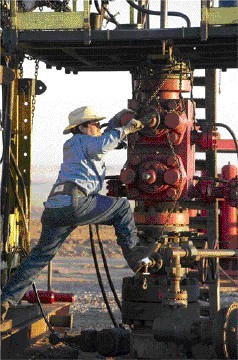
A few years ago if someone had suggested that conventional offshore gas field development programmes and the LNG market would soon be under threat from shale gas they would have been thought at best eccentric and at worst suffering from some sort of delusionary illness.
Now though shale gas has to be taken extremely seriously. Why? Well primarily because it’s dirt cheap and is pushing down the costs of heating and pretty much everything else that natural gas is used for.
Sadly for us Europeans, at the moment this is a mainly American phenomenon. The difference between US and UK gas prices is dramatic. The US gas price has fallen from around $13 per million British thermal units (BTU) in mid-2008 to just under $2 per million BTU today.
On the other hand, the gas price in the UK is, on average, five times the US price at around $10 to $11 per million BTU. This puts the UK – and most of Europe and Scandinavia – at a huge economic disadvantage compared with our American cousins.
To try to put this into perspective Robert Hefner, a US natural gas entrepreneur, said that the annual cost of heating 65million American homes by natural gas has now fallen $20billion. A reduction in costs of that order can have nothing but a positive impact on the US economy.
The other remarkable element of the American shale gas story and as mentioned very recently in Energy, the US is now planning to export shale gas as well. Have they ever exported gas before?
This could impact negatively on the viability of Middle Eastern and Australian LNG projects and will undoubtedly impact on offshore projects in Europe if shale gas derived LNG starts creeping into the European market or indeed if the European shale gas industry takes off.
There are, however, a lot of questions surrounding the long-term economic viability of shale gas.
Shale gas wells are similar to other horizontal wells. Each well needs a vertical section, a horizontal section and perhaps up to twenty or more fractures zones.
This is not cheap and along with all horizontal wells initial production levels are good but the decline rate of shale gas production is pretty frightening. Wells production levels can decline anywhere between 25-50% over 12 months. So if nothing else it’s certainly a great business for drillers to be in.
In addition, the porosity and permeability of shale rock is low and the quality of rock source is variable. In fact the US Energy Information Administration (EIA) has halved its technical recoverable resource estimates in the last year after US Geological Survey took another look at the actual performance of the Marcellus shale. That’s quite scary.
The other problem is of course that at under $2 per million BTU the price of shale gas is ridiculously cheap and investors are losing money as a result.
In fact, according to the New York Times, the eponymous investor Warren Buffet in his annual shareholder letter in February 2012 said the $2billion investment he had made buying bonds in a company called Energy Future Holdings in “a big mistake” and it was at risk of losing all of its value.
The problem is of course that as a consequence of the fall in gas prices US electricity prices have halved. I’ll repeat that shall I. Yes – they’ve halved.
So – as an electricity supplier using gas to generate its power EFH electric simply can’t compete and of course it’s now finding real difficulties in servicing its debts. Result? Lots and lots of pain for its investors.
But the other result of cheap gas being used for electricity generation is of course that more generators are expected to postpone or simply give up on coal, nuclear and even wind projects.
Thinking about this strategically, this could actually stop the move to cleaner forms of energy dead in its tracks. If that happens then the Americans may have to completely rethink their entire energy strategy for at least the next few decades.
Another issue is that with natural gas prices as low as they are producer companies are becoming victims of their own success.
The result is that their share prices have fallen in line with the markets assumption of falling profits and considerably less ambitious growth plans. The aim of course is to begin to cut back the supply and force prices back up so that everyone can make money again.
However, I’m really not so sure this is a bright idea. The problem is that while gas prices have tumbled oil prices haven’t and, in fact, they have done the opposite and gone up considerably.
This translates into higher liquid fuel prices and that of course tends to cancel out all those cost-of-living gains arising from cheap gas which will still be cheap even if it doubles from where it is now.
So rather than cut back on shale gas production might it be a smarter idea to start applying latest generation gas-to-liquids technology to shale gas such as that being developed by Gas2 in Scotland and use it to bring down the cost of fuels. I mean to say, if you’re going to shake up the industry you might as well do it properly.
But what about UK prospects for shale gas? Well it’s a big unknown at the moment. A couple of operators are making massive claims about the potential size of reserves in England and it’s thought that shale gas may exist in Scotland.
We’ll know more in about a year once drilling restarts but perhaps it might be worthwhile planning an alternative energy strategy now just in case!
Recommended for you
